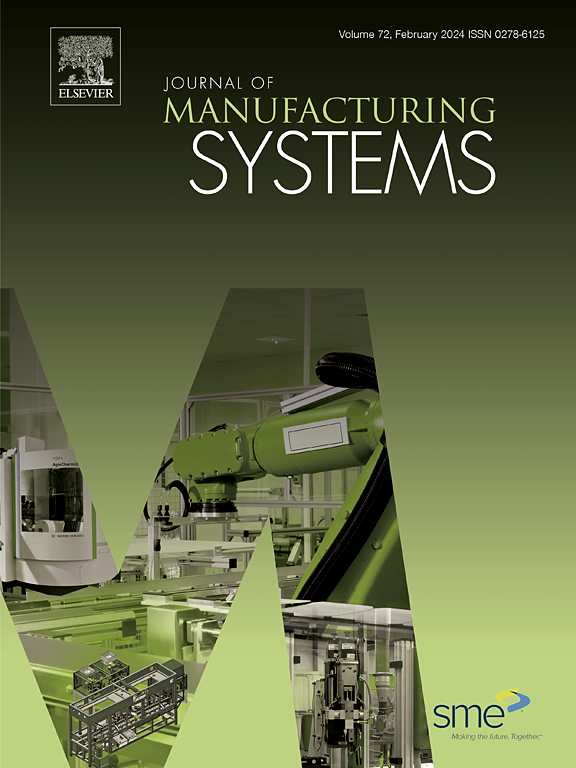Modelling and optimization of line efficiency for preventive maintenance of robot disassembly line
IF 12.2
1区 工程技术
Q1 ENGINEERING, INDUSTRIAL
引用次数: 0
Abstract
Regular preventive maintenance of the robot is the key to ensure accurate and stable operation of the robot. It is also an important step to achieve long-term stability of the disassembly line. At present, there is a lack of joint research on preventive maintenance and conventional disassembly for robot disassembly line balancing problem. This study will integrate the joint optimization of the two for conventional disassembly scenario and preventive maintenance scenarios of robot disassembly line. A mixed integer linear programming model considering preventive maintenance of robot disassembly is established, which aims to optimize the disassembly efficiency of conventional disassembly scenario and preventive maintenance disassembly scenario, and optimize the conversion efficiency of the two scenarios. The fore-and-aft tool replacement of the robot in the proposed model is also considered to be closer to the actual disassembly scenario. This study will design a multi-objective improved genetic simulated annealing that matches the problem characteristics to efficiently solve large-scale problems. The performance of the proposed algorithm is verified by solving 21 benchmarks containing task sizes ranging from 7 to 145. Then the correctness of the proposed model and algorithm is verified bidirectionally by analyzing the exact results and the results of the proposed algorithm from a small-scale case. Finally, the performance of the algorithm is further tested through a laptop disassembly case, and the results are analyzed comprehensively to show the importance of the disassembly characteristics considered in the preventive maintenance of the robot.
求助全文
约1分钟内获得全文
求助全文
来源期刊

Journal of Manufacturing Systems
工程技术-工程:工业
CiteScore
23.30
自引率
13.20%
发文量
216
审稿时长
25 days
期刊介绍:
The Journal of Manufacturing Systems is dedicated to showcasing cutting-edge fundamental and applied research in manufacturing at the systems level. Encompassing products, equipment, people, information, control, and support functions, manufacturing systems play a pivotal role in the economical and competitive development, production, delivery, and total lifecycle of products, meeting market and societal needs.
With a commitment to publishing archival scholarly literature, the journal strives to advance the state of the art in manufacturing systems and foster innovation in crafting efficient, robust, and sustainable manufacturing systems. The focus extends from equipment-level considerations to the broader scope of the extended enterprise. The Journal welcomes research addressing challenges across various scales, including nano, micro, and macro-scale manufacturing, and spanning diverse sectors such as aerospace, automotive, energy, and medical device manufacturing.
 求助内容:
求助内容: 应助结果提醒方式:
应助结果提醒方式:


